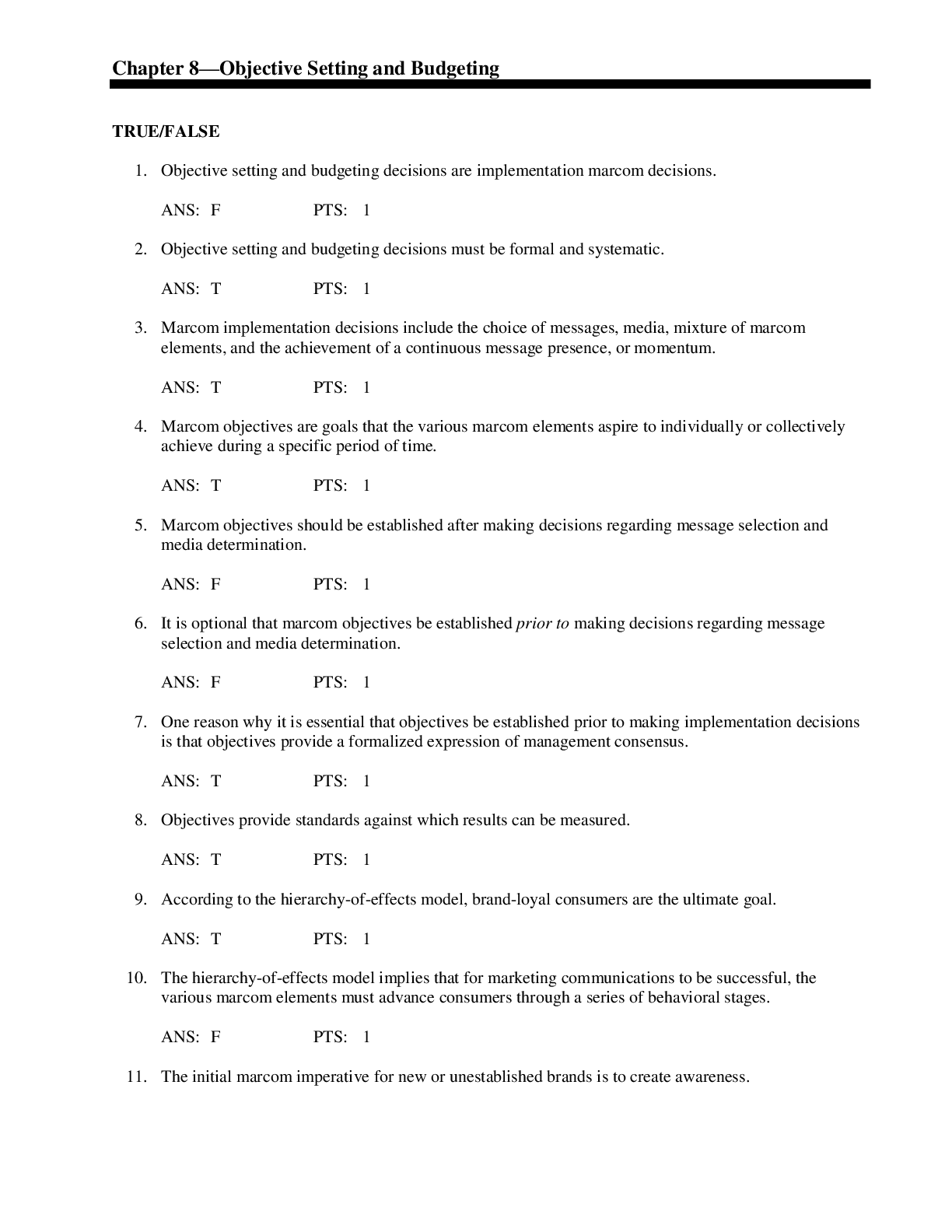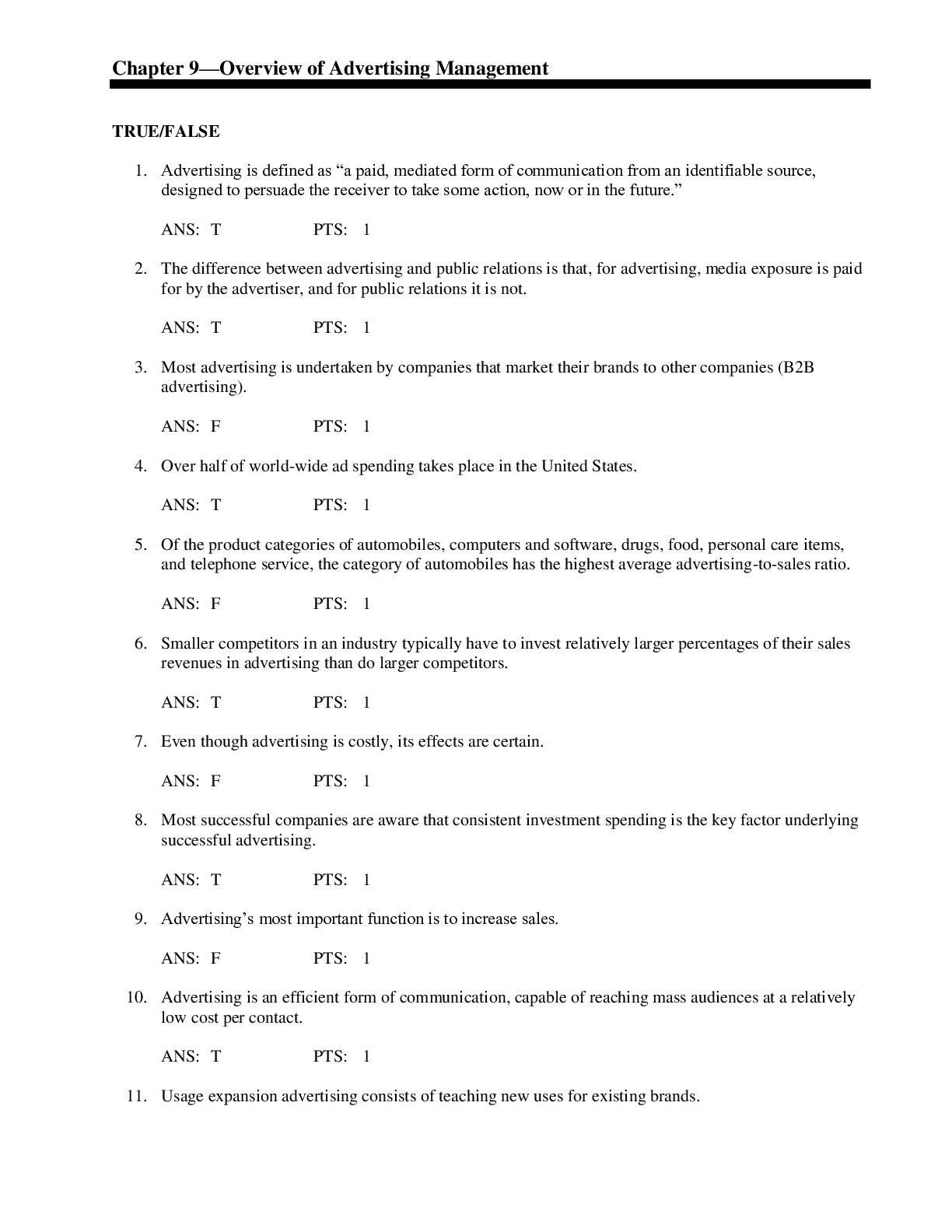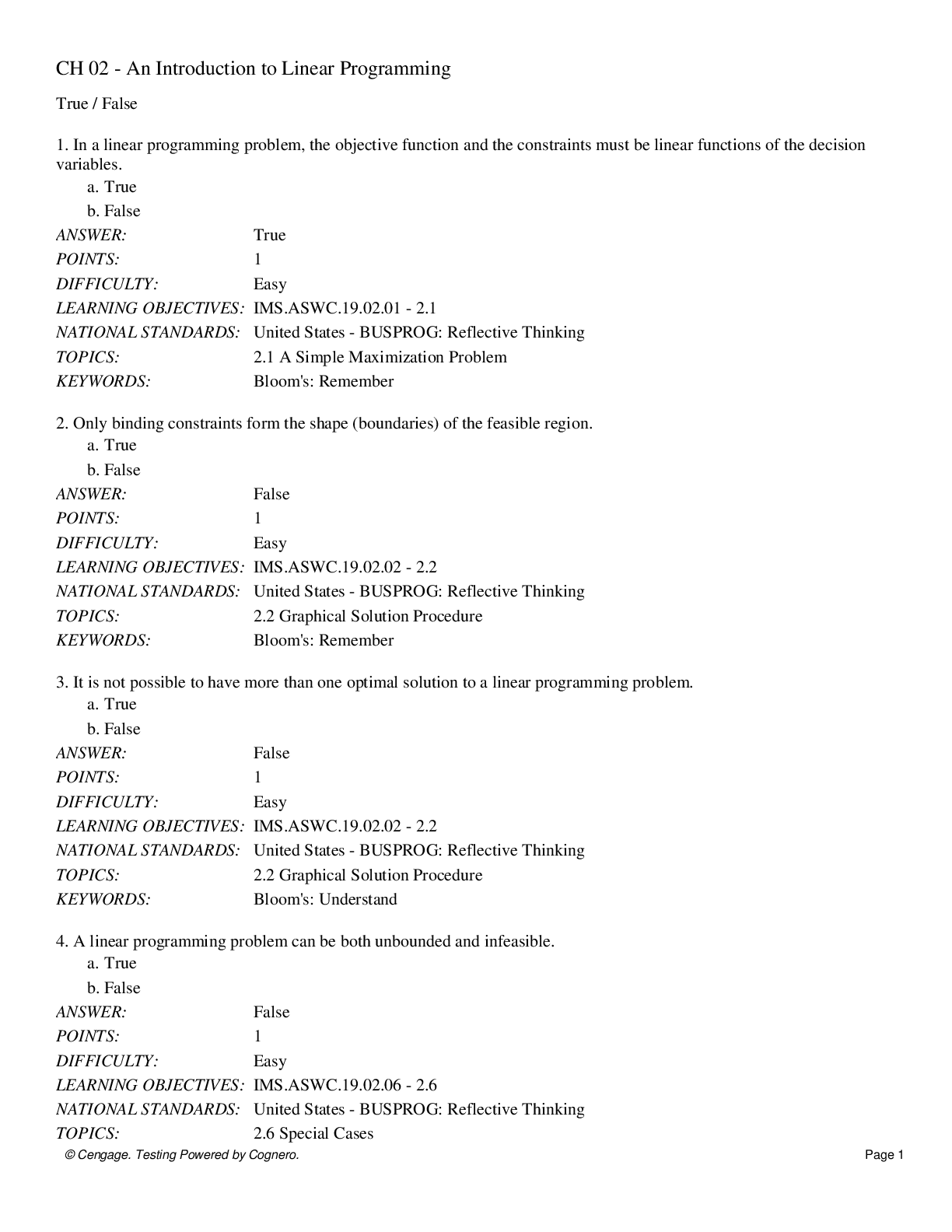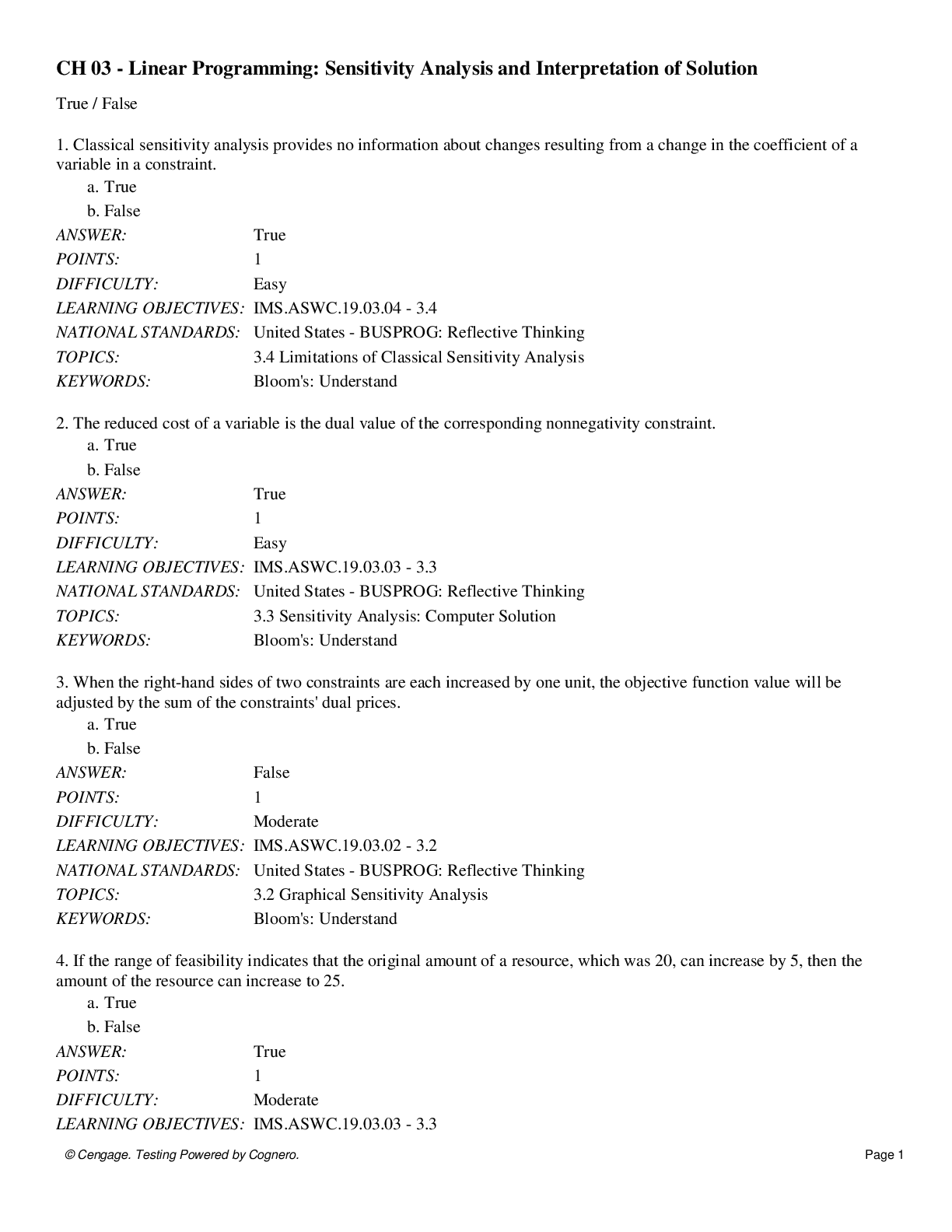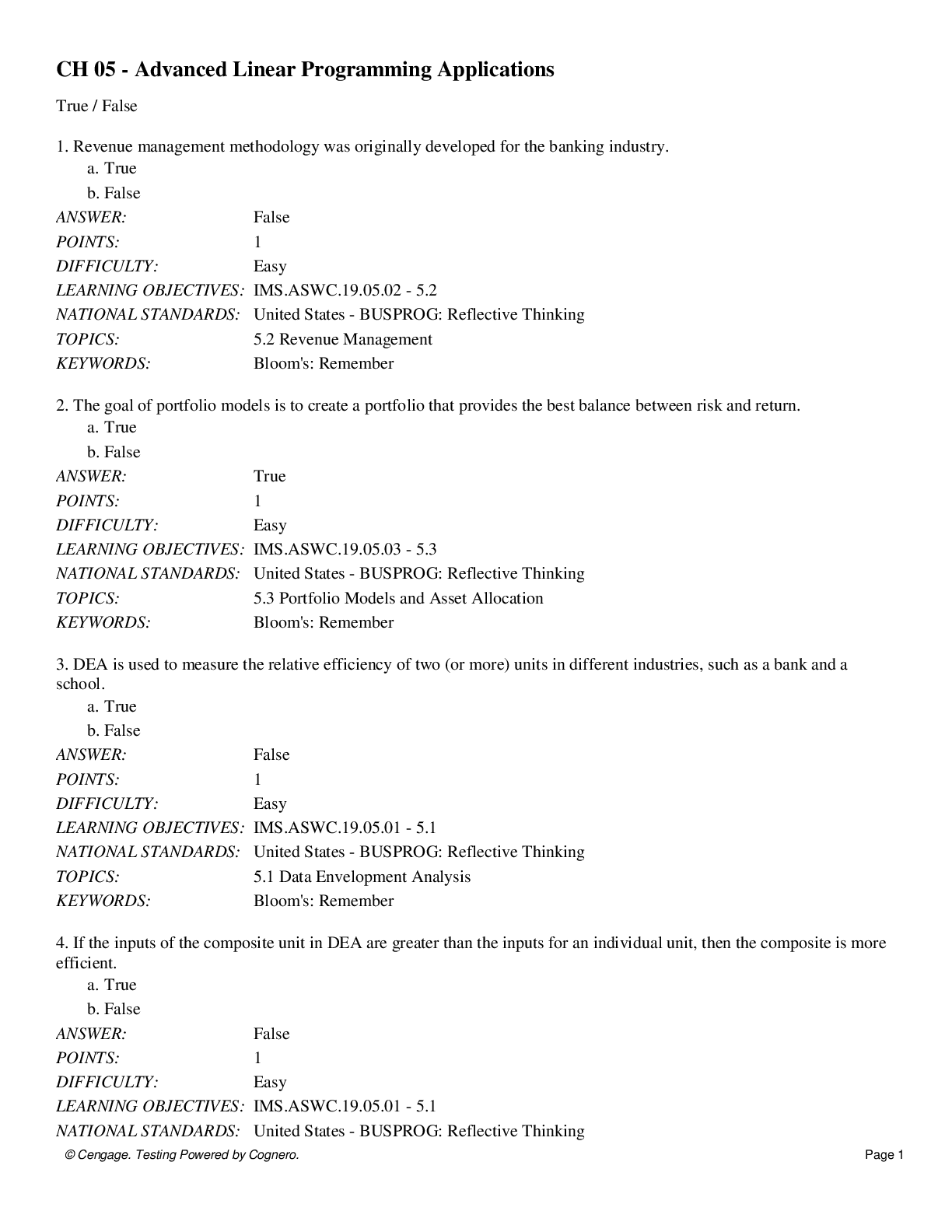Data Systems > QUESTIONS & ANSWERS > SPIPC (SPeD) Questions and Answers Already Passed (All)
SPIPC (SPeD) Questions and Answers Already Passed
Document Content and Description Below
SPIPC (SPeD) Questions and Answers Already Passed What is the purpose of the PPBE process: ✔✔(PPBE) process is one of three processes (Acquisition, Requirements and Funding) that support the De... fense Acquisition System. The PPBE process is focused on the Financial Management and resource allocation for current and future DoD acquisition programs. PPBE Process is focused on: ✔✔on the Financial Management and resource allocation for current and future DoD acquisition programs. The process is established by the Secretary of Defense (SecDef) who provides priorities and goals under the main guidance of DoD Directive 7045.14 "Program Planning Budget & Execution (PPBE)" Process - 29 Aug 2017. Planning Phase ✔✔1. The Planning phase of the PPBE Process is the definition and examination of alternative strategies, the analysis of changing conditions and trends, threat, technology, and economic assessments in conjunction with efforts to understand both change and the long-term implications of current choices. 2. It examines and determines the needs for the DoD for the next 5, 10 and 20+ years into the future from strategic guidance. 3. The Planning Phase is the process for determining what capabilities are needed for the future from strategic guidance 4. he Planning phase of PPBE is a collaborative effort by the Office of the Secretary of Defense and the Joint Staff, in coordination with DoD components. It begins with a resource-informed articulation of national defense policies and ends military strategy known as the Defense/Joint Planning Guidance (DPG). The DPG is used to lead the overall planning process 5. The DPG is the link between planning and programming phase and provides guidance to the DoD Components (military departments and defense agencies) for the development of their program proposals, known as the Program Objective Memorandum (POM). [1] Programming Phase ✔✔1. The Programming phase of the PPBE process defines and analyzes alternative force structures, weapon systems, and support systems together with their multi-year resource implications and the evaluation of various tradeoff options. 2. The Programming Phase is the process for balancing and integrating resources among the various programs according to certain priorities. 3. The Programming Phase begins with the development of a Program Objective Memorandum (POM) and Budget Estimate Submission (BES) by each DoD Component. This development seeks to construct a balanced set of programs that respond to the guidance and priorities of the Defense Planning/Programming Guidance within fiscal constraints. 4. When completed, the POM provides a fairly detailed and comprehensive description of the proposed programs, including a time-phased allocation of resources (forces, funding, and manpower) by program projected six years into the future. In addition, the DoD Component may describe important programs not fully funded (or not funded at all) in the POM, and assess the risks associated with the shortfalls Budgeting ✔✔The Budgeting phase of the PPBE process includes formulation, justification, execution, and control of the budget. The primary purpose is to scrutinize the first one or two years of a programs budget to ensure efficient use of resources to produce a DoD budget request that can be effectively defended before Congress. The budget is a comprehensive financial plan that encompassing the totality of federal receipts and outlays (expenditures). The Budgeting Phase is the process for convincing OSD and Congress to provide the necessary resources and then balancing the checkbook to ensure the resources are spent in accordance with the law. The budgeting phase of PPBE occurs concurrently with the programming phase; each DoD Component submits its proposed budget estimate simultaneously with its Program Objective Memorandum (POM). The budget converts the programmatic view into the format of the congressional appropriation structure, along with associated budget justification documents. The budget projects resources only two years into the future, but with considerably more financial details than the POM. After the hearings, each analyst prepares a decision document (known as a Resource Management Decision (RMD) for the programs and/or appropriations under his or her area of responsibility. The RMD proposes financial adjustments to address any issues or problems identified during the associated budget hearing. The RMDs are staffed for comment and forwarded to the Deputy Secretary of Defense for decisions. These decisions are then reflected in an updated budget submission provided to the OMB. After that, the overall DoD budget is provided as part of the President's Budget request to the Congress. [1] Execution ✔✔The Execution phase of the PPBE process is the real world application of the Planning, Programming, Budgeting and Execution process The execution review occurs simultaneously with program and budget reviews. The execution review provides feedback to the senior leadership concerning the effectiveness of current and prior resource allocations. Over time, metrics are being developed to support the execution review that will measure actual output versus planned performance for defense programs. To the extent performance goals of an existing program are not being met, the execution review may lead to recommendations to adjust resources and/or restructure programs to achieve desired performance goals. What events must take place before the DoD can execute is program: ✔✔- The President signs the Authorization and Appropriations bills passed by the Congress - OMB must apportion the appropriations providing obligation/budget authority - The Department of the Treasury must issue a Treasury Warrant providing cash - Program authority must be released by the Under Secretary of Defense (Comptroller) - Finally, all these authorities must be loaded into the Program Budget Accounting System (PBAS) Risk management is a five-step process that provides a framework for collecting and evaluating information to: ✔✔• Assess assets (identify value of asset and degree of impact if asset is damaged or lost) • Assess threats (type and degree of threat) • Assess vulnerabilities (identification and extent of vulnerabilities) • Assess risks (calculation of risks) • Determine countermeasures (security countermeasure options that can reduce or mitigate risks cost effectively 2. What is the purpose of the threat assessment step of the risk management process? ✔✔Determine threats to identified assets Assess intent and capability of identified threats Assess current threat level for the identified assets 1. What is the purpose of the asset assessment step of the risk management process? ✔✔• Identify assets requiring protection and/or that are important to the organization and to national security • Identify undesirable events and expected impacts • Prioritize assets based upon consequences of loss 3. What is the purpose of the vulnerability assessment step of the risk management process? ✔✔- Identify existing countermeasures and their level of effectiveness in reducing vulnerabilities • Identify potential vulnerabilities related to identified assets and their undesirable events • Identify current vulnerability level for the identified assets that can be exploited by the identified threats 4. What is the purpose of the risk assessment step of the risk management process? ✔✔• Integrate information about the impact of undesirable events (collected during the asset assessment step) and the likelihood of undesirable events (based on information collected during the threat and vulnerability assessment steps) to determine risks to identified assets 5. What is the purpose of the countermeasure determination step of the risk management ✔✔- Identify potential countermeasures to reduce vulnerability and/or threat and/or impact • Identify countermeasure benefits in terms of risk reduction • Identify countermeasure costs • Conduct cost/benefit analysis • Prioritize options and prepare recommendation for decision maker 6. What is the primary benefit of conducting the risk management process? ✔✔National-level security policy endorses a holistic risk management approach, allowing decision makers to effectively allocate resources that provide the necessary security to assets that match the threat to those assets 7. What are the primary costs of conducting the risk management process? ✔✔Time and effort necessary to execute the five steps of the risk management process 8. What are the potential challenges security practitioners may face when enacting the risk management process? ✔✔Availability of information necessary to accurately determine the likelihood and impact of undesirable events Where can we get information to evaluate an organization's compliance with security policies? ✔✔Self-Inspections Risk Mitigation Strategy ✔✔Answers the question, what is the plan to address the risk, or should the risk be accepted, avoided, transferred, or controlled. Risk Acceptance (Monitoring) ✔✔The program acknowledges that the risk or condition may be realized and the program is prepared to accept the consequences. Accepting the risk does not mean it should be ignored, the program should continue to track the risk to ensure the accepted consequences do not change for the rose or the likelihood increase. Monitoring implies the program establishes knowledge points that provide opportunities to reevaluate the risk. Before accepting the risk, the program should identify the resources and schedule that would be needed should the risk be realized. Occasionally, managers must seek relief from the next higher headquarters. Programs should make every attempt to understand the risk so future efforts are fully informed. Risk Avoidance ✔✔A program reduces or eliminates the risk even or condition by taking an alternated path. It eliminates the source of the risk and replaces it with another solution. Analyzing and reviewing the proposed system in detail provides insight into the drivers for each technical requirement. Risk Transfer ✔✔Risk transfer includes reassigning or delegating responsibility for tasks to mitigate a risk to another entity. This might include transferring the financial responsibility as well. This approach may involve reallocating risk management tasks from one program to another, between government organizations, or across two sides of an interface managed by the same organization. The same risk may be carried (shared) by multiple government organizations. However, programs should recognize transference of risk does not eliminate all responsibility and risks must be monitored for potential consequences. While financial risk may be substantially transferred by certain contractual arrangements or inter-program agreements, the schedule and performance risk cannot be fully transferred because the government needs the product. For example, if a radio is built to be used by multiple platforms but is modified for use on one platform program, it may be a risk to that program, but it also can be a risk to the radio program office. Development of government-furnished equipment for application to multiple programs typifies this type of risk. Risk Control ✔✔The risk control option seeks to actively reduce risk to an acceptable level. Control generally entails taking action to reduce the likelihood, or the consequence, of a risk to as low as practical in order to minimize potential impacts. Section 2 discussed activities to reduce risk exposure by phase. [Show More]
Last updated: 1 year ago
Preview 1 out of 11 pages
.png)
Buy this document to get the full access instantly
Instant Download Access after purchase
Add to cartInstant download
We Accept:

Reviews( 0 )
$10.00
Document information
Connected school, study & course
About the document
Uploaded On
Feb 22, 2023
Number of pages
11
Written in
Additional information
This document has been written for:
Uploaded
Feb 22, 2023
Downloads
0
Views
74


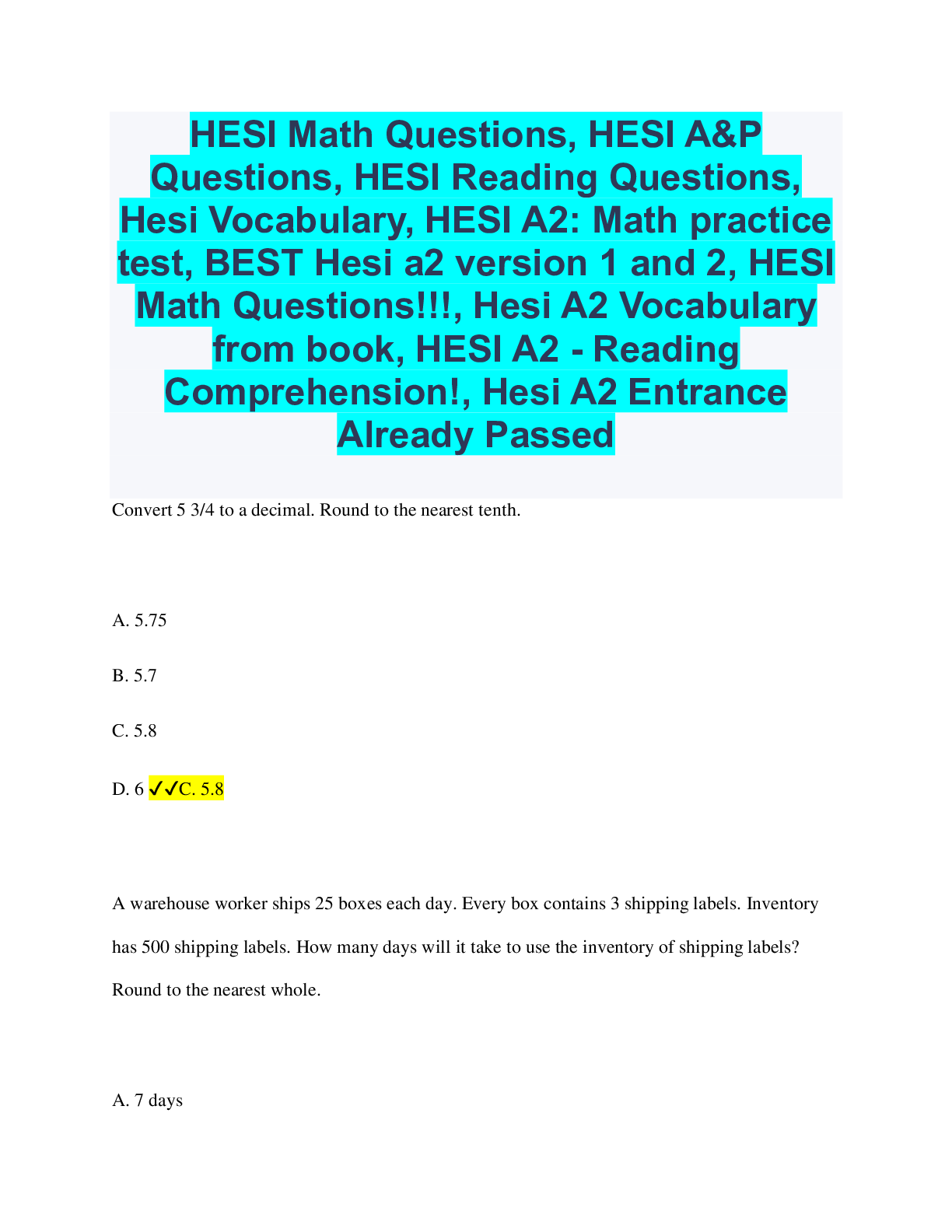
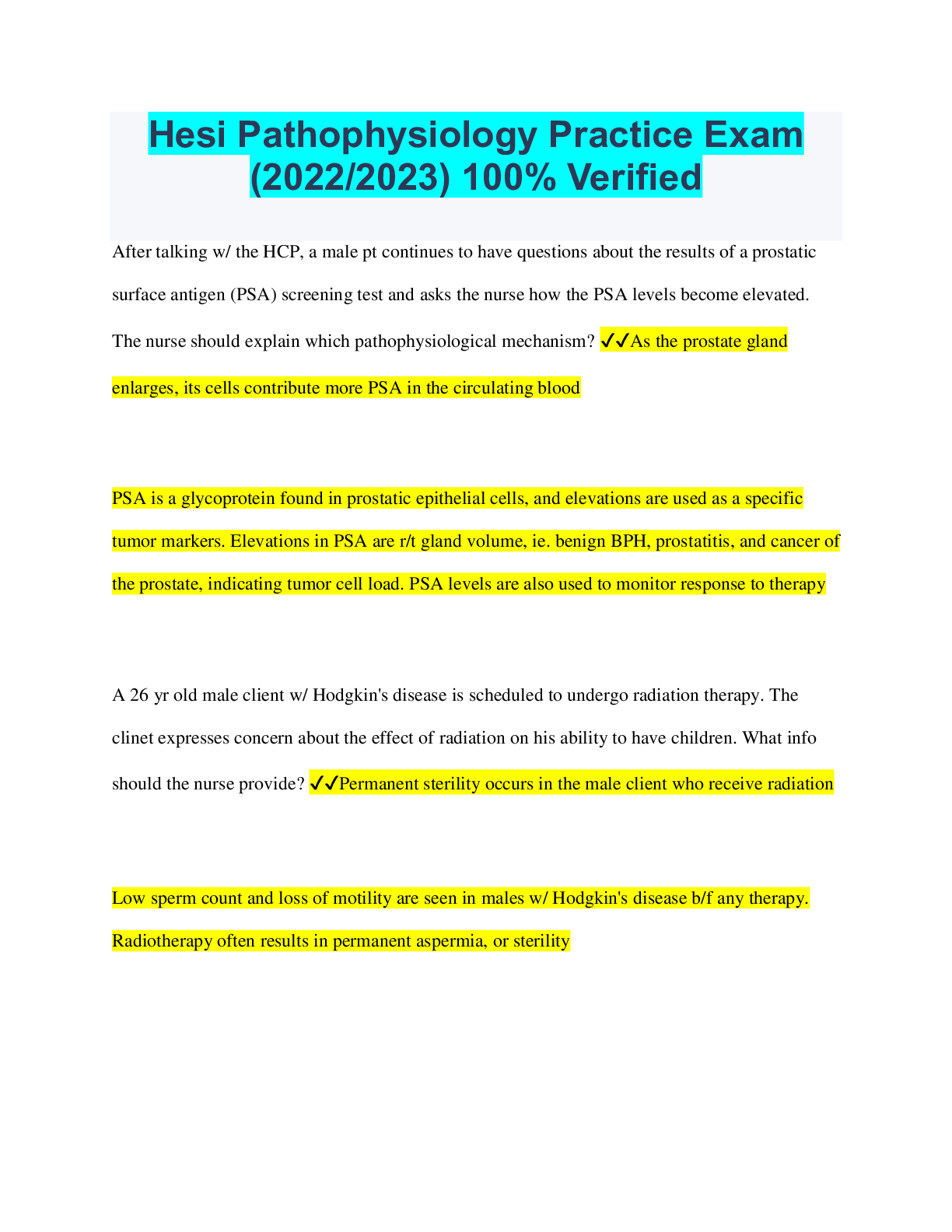

.png)
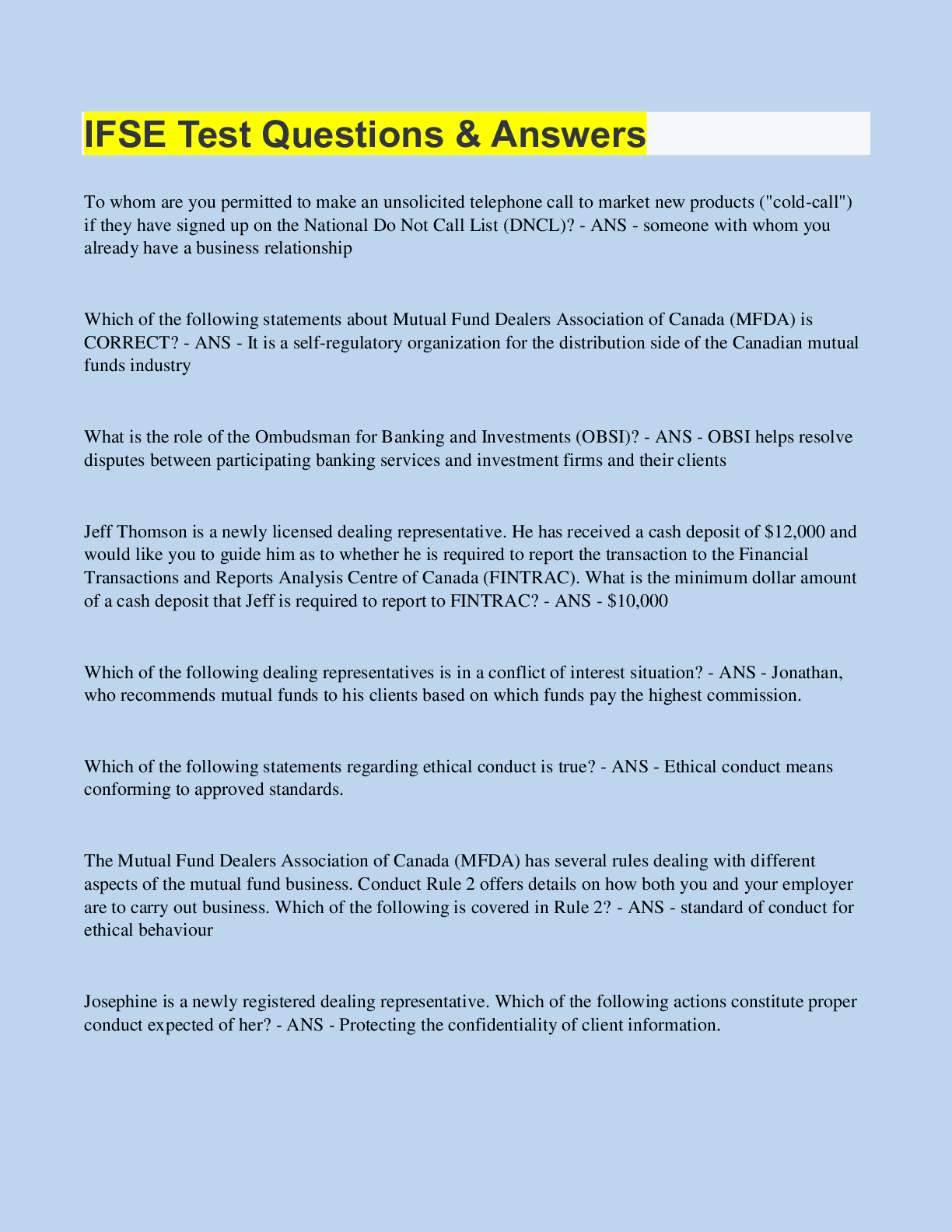
.png)
.png)
.png)
.png)
.png)
.png)




